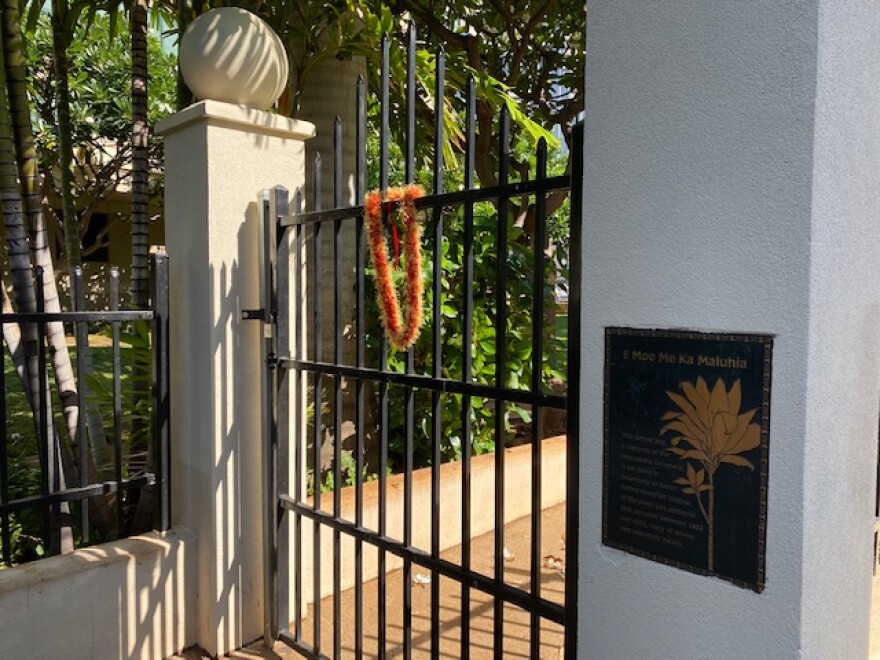Hawaiʻi’s COVID count hit 1,000 the weekend before the Thanksgiving holiday. Imagine if all those people were buried in one place. That's what happened to 1,000 Native Hawaiians who died of smallpox. The Conversation takes you to their final resting spot in Kakaʻako.
The epidemic hit the islands in 1853. The first smallpox case arrived in Honolulu harbor on the merchant ship, the Charles Mallory. The disease killed more than 5,000 people. It led to the quarantining of ships at what we know as Sand Island. It became known as Quarantine Island.
It’s where vessels would dock, flying a yellow flag to alert the public it was in quarantine because of a sick passenger. Following the epidemic, laws were passed making vaccines mandatory for residents and visitors.
This brings us back to the present day. About 1,000 Native Hawaiians who died of smallpox are buried in Kakaʻako.

Cemetery historian Nanette Napoleon was surprised to learn of the mass burial site. It was a cemetery that she never visited before this summer.
The site is off Quinn Lane. It's a tiny street just off of South Street, sandwiched behind the Kakaʻako Fire Station, the old Royal Brewery building, and a senior housing project on Queen Street.
Napoleon was researching the influenza outbreak here in the islands and came across documents indicating the cemetery contained remains of Native Hawaiians who died of smallpox.
"The reason they died in such huge numbers, especially Native Hawaiians, is because they didn't have immunity to these diseases, partly, and partly because they were of the lower economic spectrum," Napoleon said. "So they didn't have access to health care as much as some other higher level economic groups, especially Caucasians. So more Hawaiians were dying than any other ethnic group."

The cemetery is gated, but open to the public and a plaque says the sacred site is a remnant of the Honuakaha cemetery in memory of Native Hawaiian victims of the smallpox outbreak that occurred between 1853 and 1854.
There are a couple of grassy mounds and a stone altar, an ahu, to mark the spot. The cemetery has a quietness as city sounds echo in the background.
So the next time you're walking in Kakaʻako, stop by the smallpox cemetery on South Street — present-day evidence of a scourge that decimated around 10% of the Native Hawaiian population at the time.
"We're sitting in the middle of the graveyard, right? And just looking all around, there's high rises all around us, so it's this little oasis here," Napoleon said.
This interview aired on The Conversation on Dec. 2, 2021.




